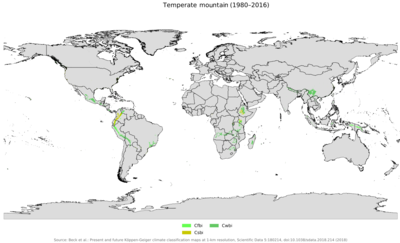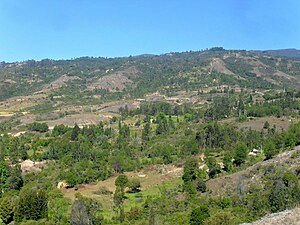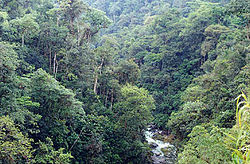User:Tetrarca85/sandbox
English names of Köppen climate classification
[edit]- Tropical climate A
- Tropical rainforest climate Af
- Tropical monsoon climate Am
- Tropical savanna climate Aw/As
- Dry climate B
- Hot desert climate BWh
- Cold desert climate BWk
- Hot semi-arid climate BSh
- Cold semi-arid climate BSk
- Temperate climate C
- Humid temperate climate Cf
- Humid subtropical climate Cfa
- Oceanic climate Cfb
- Subpolar oceanic climate Cfc
- Highland humid climate Cfbi
- Subhumid temperate climate Cw
- Monsoon subtropical climate Cwa
- Highland monsoon temperate climate Cwb
- Subpolar subhumid temperate climate Cwc
- Mediterranean climate Cs
- Tipic mediterranean climate Csa
- Dry mediterranean climate Csa/BS
- Continentalized mediterranean climate Csa/BS
- Oceanic mediterranean climate Csb
- Subpolar mediterranean climate Csc
- Highland equatorial climate Csbi
- Humid temperate climate Cf
- Continental climate D
- Humid continental climate Df
- Humid temperate continental climate Dfa/Dfb
- Humid subartic continental climate Dfc/Dfd
- Monsoon continental climate Dw
- Monsoon temperate continental climate Dwa/Dwb
- Monsoon subartic continental climate Dwc/Dwd
- Mediterranean continental climate Ds
- Mediterranean temperate continental climate Dsa/Dsb
- Mediterranean subartic continental climate Dsc/Dsd
- Humid continental climate Df
- Polar climate E
- Polar tundra climate ET
- Alpin tundra climate ETH
- Polar ice cap climate EF
- Highland ice cap climate EFH
Humid temperate climate
[edit]
The humid temperate climate is a temperate climate sub-type mainly located at mid latitudes. It has humidity and rain throughout the year due to the oceanic influence. According to Köppen climate classification this climate is called Cf, where "C" means that it is temperate and "f" suggests that it is humid, no dry season defined[1]. Often it is simply called oceanic climate, however it is a sub-type of the humid temperate.
Sub-types
[edit]Humid subtropical climate (Cfa)
[edit]The humid subtropical climate, like others subtropical climates has a hot summer. It is also called chinese climate or pampeano climate because it is located in southeast of China and Argentina[2]. Typic vegetation is subtropical forest.
Oceanic climate (Cfb)
[edit]It is the oceanic climate, also known like atlantic or britanic. It is characterized by having warm summer and moderated winter. It is located in continental western coasts. Typic vegetation is the humid temperate forest.
Subpolar oceanic climate (Cfc)
[edit]The subpolar oceanic climate is located in high latitudes, at the border between the oceanic climate and polar climate. Cold summer. Vegetation here is subpolar forest
Highland humid climate (Cfbi)
[edit]
The highland humid climate is the tropical variation of the oceanic climate, where is often included, but like all highland temperate climates is isothermal, it is located up to 2500 m altitude. The letter "i" means its isothermal condition. It is mainly located at highlands of Andes, Central American and Nueva Guinea.
It bears similarity with the highland equatorial climate Csbi and the highland subhumid temperate climate Cwbi. On these climates with low latitude does not exist relevant differences between temperate of the months, therefore distinguish between summer and winter can be speculative and a lot places classified as some of them can be in another too.
See also
[edit]- Temperate climate
- Humid subtropical climate
- Oceanic climate
- Highland temperate climate
- Köppen climate classification
- Temperate zone
References
[edit]- ^ M. C. Peel et al. 2007, Updated world map of the Köppen-Geiger climate classification Hydrol. Earth Syst. Sci., 11, 1633-1644, 2007 https://doi.org/10.5194/hess-11-1633-2007
- ^ Mario E. Farber, Arq. Irene N. Raizboim 1996-2019, Tipos de clima de Argentina El Sur del Sur
Dry climate
[edit]
The dry climate is a climate type where evaporation surpass the humidity of precipitation.[1]. It is B in Köppen climate classification. It is divided into two sub-types: desert climate BW and semi-arid climate BS. Precipitation and vegetation is scarce. It is mainly located in mid latitudes, where tropical rainforest and oceanic humidity can not reach.
Often simply is called Arid climate, but the arid climate is a dry climate sub-type.

Sub-types
[edit]Semiarid climate (BS)
[edit]Also known as steppe climate, here precipitation goes from 400mm until 800mm. Frequently xerophytic scrub and pastureland are dominant vegetation. It is dividid in: Hot semi-arid BSh and Cold semi-arid BSk.
Desert climate (BW)
[edit]The desert climate or arid climate is a climate where anual precipitation is below 300mm. Vegetation is usually non-existent. It is divided in: Hot desert BWh and Cold desert BWk.
See also
[edit]References
[edit]- ^ McKnight, Tom L; Hess, Darrel (2000). "Climate Zones and Types". Physical Geography: A Landscape Appreciation. Upper Saddle River, NJ: Prentice Hall.
Humid continental climate
[edit]
The humid continental climate is a continental climate with precipitations throughout the year, no dry season. In summer there may be storms and in winter snowfalls. In Köppen climate classification is Df. However, often wrongly is called temperate continental climate, for this concept see: temperate continental climate.
The humid continental climate is located in Northern Hemisphere from 40° N until 70° N, in North America, Europe and Asia.

Sub-types
[edit]Hot summer humid continental climate (Dfa)
[edit]Is the continental climate with hot summer also called Danubian[1]. Typic vegetation is the caducifolio forest.
Warm summer humid continental climate (Dfb)
[edit]Is a hemiboreal continental climate, also known as Russian. Winters are most cold. Similar to oceanic climate. Typic vegetation is mixed forest[2].
Humid subpolar climate (Dfc)
[edit]Is a subpolar climate or Siberian, short summer and cold winters. Is the climate continental with greater extension, at latitudes of 50° N to 70 °N. The taiga is dominant vegetation. Permafrost is common on these zones.
Humid hipercontinental climate (Dfd)
[edit]Is a extreme continental climate with very cold winters, no summer and wide termic range.
See also
[edit]- Continental climate
- Monsoon continental climate
- Mediterranean continental climate
- Köppen climate classification
References
[edit]Highland temperate climate
[edit]
The highland temperate climates are a temperate climate sub-type, although located in tropical zone, isothermal and with characteristics different from others temperate climates like oceanic or mediterranean where they are often are included without proper differentiation.
The mainly difference is that it is isothermal, this mean that it has low termic range between months, whose causa is altitude and not latitude, no four seasons (spring, summer, autumn, winter) of temperate zone. However, there are rainfall variation (dry season and wet season). It is usually said that it have a Eternal Spring or a Eternal Autumn.
A letter "i" is added to indicate its isothermal condition (Cfb, oceanic climate, Cfbi, highland humid temperate climate)[1].

Location
[edit]It is characteristic of South and central México highlands, Central America mountains, North Andes in South America and East Africa mountains, among a few other areas like Borneo and New Guinea highlands.
Causes and characteristics
[edit]Altitude generate a difference with lowlands. Temperature and atmospheric pression decrease, approximately 0,6°C or 1°C every 100 m. This s because to the adiabatic rate air.
In summary, this climates are generate because of temperature decrease on tropical zone, at same latitudes where appear tropical climates, located between 0 and 1500 m, while from 1500 m until 3000 m (depending of latitude) appear highland temperate climate, semihumid and isothermal. Above 3500 m is the alpine tundra climate ETH, identified with páramo and puna vegetation.

This climate often has been called oceanic Cfb or mediterranean Csb, however, it is not mediterranean since it is not found in temperate latitudes, do not limit with deserts and neither it is oceanic, because humidity here do not comes from ocean but of tropical rainforest near (Congo, Amazon, Chocó).
Temperatures are cool all year, aproximately between 12°C and 19°C mean all months and year. Nevertheless, there are high daily range termic, between day and night, around 10°C. There may be high nubosity and air humidity. Clear skis are rare.
Precipitations, only as rainfall, and often hail, it decrease with altitude, it is around 700mm - 2000mm, that is, higher than temperate zone.
The vegetation basically is Highland Forest, beside highland wooded savanna and scrubs.
Sub-types
[edit]The particular location of this highlands, many of which are just north of the Earth's equator but South of the metereological equator, what added to low termic range, makes defining between winter and summer speculative, sometimes it is confunde Cfbi, Cwbi and Csbi, just like it happens between tropical climates Aw and As[2].
Highland humid temperate climate Cfbi
[edit]
Constant precipitations althourough yearthroughout the year, no dry season. Its temperature oscillates bewteen 10°C and 20°C. Precipitations are more high than others highland, about 1500 mm. It is the tropical varition of the oceanic climate Cfb. It can appear anywhere of tropical zone with many rainfall and adequate altitude.
Cities:
Highland monsoon temperate climate Cwb/Cwbi
[edit]
Rainfall come in hipotetic summer (monsoon), (usually bewteen March and June in North Hemipshere and November and February in South Hemisphere), dry season take place in winter or cold months. Temperatures around 12°C y 19°C and precipitations from 800mm. Of the three subtypes, it is the one that occurs at a higher latitude, extending to subtropical areas exceeding 15° north and south latitude, which is why it usually presents a greater termic range, between 3°C and 4°. It is located in Peru and Bolivia highlands, mountains of Brazil, center of México and mountains of Central America and East Africa. Because of that, its vegetation is variable, from savanna until forests.
Most of the time it is simply called as Cwb because outside the intertropical zone it is practically non-existent.
Cities:
Highland equatorial climate Csbi
[edit]
Dry season math with more hot and sunny months, it have marked wet season, with bimodal regime, where one of the they is more strong than the other. Precipitatioes normally between 700mm y 2000mm, humidity decrease with altitude, anual rainfall decrease 100 mm every 100 m altitude. Intertropical Convergence Zone appears in two times yearly, while temperature depend of altitude, generally between 12°C and 18°C, very stable and unchanging throughout the year.
It is located in equatorial latitudes to no more than 5°S and 5°N of equator. It is almost exclusive of Ecuadorian-Colombian Andes, located from 1500 m altitude. It consists in tropical variation of oceanic mediterranean climate Csb. Common vegetation is the highland wooded savanna. Andean forests or Cloudy forests appears above 3000 m of great biodiversity[3].
Cities:
- Bogotá, Colombia
- Cuenca, Ecuador
- Ibarra, Ecuador
- Manizales, Colombia
- Pasto, Colombia
- Popayán, Colombia
- Quito, Ecuador
- Tunja, Colombia
See also
[edit]- Temperate climate
- Humid temperate climate
- Subhumid temperate climate
- Mediterranean climate
- Altitude
- Köppen climate classification
References
[edit]- ^ The Ceylon Forester, Ceylon Forest Department 1953
- ^ Karina Martínez et al. editores 2014, "Economic impact of climatic change in Colombia." Cap.2, p.14, BID, ONU, Washintong DC
- ^ Northern Andean Montane Forests. Archived 2017-04-25 at the Wayback Machine WWF Global

